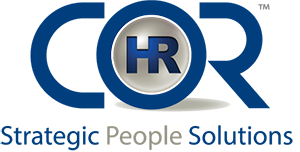The science behind why February has been an unusually warm month goes beyond the scope of our employment update. However, we are happy to cover key reasons why February is a HOT month on the employment scene! Because our employment landscape continues to unfold, if you are flummoxed by the constant changes, just reach out to our team to help your business navigate the path forward.
2022 Supplemental COVID-19 Paid Sick Leave
Governor Newsom signed this reinstated, modified COVID-19 Paid Sick Leave into law on February 9th, though it will take effect 10 days later on February 19th. The law applies to employers with 26 or more employees, providing up to 40 hours of supplemental paid sick leave (SPSL) for covered reasons. Further, employees may qualify for an additional 40 hours of SPSL with documentation of a positive test result.
The law is retroactive to January 1st and expires September 30th, however it is not a repeat of the 2021 law, despite some similarities. Below are key highlights:
- SPSL was enacted to subsidize employees that were/are unable to work or telework due to covered reasons.
- Covered reasons include needing to directly quarantine or isolate due to COVID-19, not limited to exposure occurring in the workplace, plus getting and/or having a physical reaction to a vaccination or booster shot.
- Covered reasons also include caring for a covered family member that needed to quarantine or isolate due to COVID-19, or vaccinations/boosters, or for a child whose place of care or school was shut down due to COVID-19 reasons on the premises.
- Additionally, if the employee can produce a positive test result for COVID-19 for themselves or a covered family member, they may qualify for an additional 40 hours of SPSL.
- Otherwise, employers should credit against SPSL any exclusion pay already provided to quarantined employees retro to Jan 1, due to exposure in the workplace.
While the focus of SPSL is on full-time employees working 40 hours or more per week regularly, there is discussion of how to treat part-time employees. And there is a limit of how much an employer is obligated to pay to an employee: up to $511 per day or $5,110 in total.
For more details, Q&A, and required postings, follow this link: 2022 SPSL Resources.
When and Where do I (still) need to wear a Mask?
If you enjoy governance by Twitter, then you likely caught Governor Newsom’s recent Tweet confirming a sunset of the statewide mask mandate on February 15th. Does that mean no one needs to wear a mask anywhere in CA, any longer? Sadly, no. Tweets are limited to 280 characters, and governance is far more complex than social media.
Per Cal/OSHA, workplaces in CA that collect and update vaccination data from their employees may relax mask requirements for employees that are fully vaccinated (even if not boosted) starting February 16th. However, if there is a closed-door meeting occurring where both fully vaccinated and unvaccinated attend, then all are expected to wear a mask. And for workplaces that haven’t collected this data, all employees must continue to wear a mask.
Of course, there are counties and cities that are not lifting stringent mask requirements, including: Los Angeles, Santa Clara and San Diego. Employers are required to follow the most stringent rules in effect where your employees are performing work.
Overall, employers must still have N-95 masks to supply as needed to employees or visitors, and cannot retaliate against an employee for requesting or wearing a mask.
Cal-OSHA 300a Summary Logs due March 2nd
The Occupational Safety and Health Act (“OSH Act”) requires covered employers to meet several reporting requirements to prove compliance. From Feb 1 – April 30, employers need to post the OSHA Form 300A Summary Log (OSHA Forms) aggregating injuries or illnesses from 2021. Covered employers must also submit this data electronically to OSHA by March 2nd.
There are two exemptions to OSHA’s recordkeeping requirements:
- Companies with 10 or fewer employees. These companies must keep injury and illness records only if OSHA specifically requires them to do so.
- Establishments classified in certain low-hazard industries. For example, the retail, finance, real estate, insurance, and service sectors are considered partially exempt. Importantly, OSHA’s partial industry classification exemption does not apply company-wide however.
Because a given company may operate establishments with different business activities classified in different North American Industrial Classification (NAICS) codes, it is important that each individual establishment learn what its NAICS code is to determine whether it is required to keep and file injury and illness records.
Is Your Establishment Exempt?
Once you have found your individual establishment’s NAICS code, you can use the following table to determine if your “industry” (or particular establishment) is exempt from the recordkeeping rule. Keep in mind also that all employers, including those partially exempted, must report to OSHA any workplace incident that results in a fatality, in-patient hospitalization, amputation, or loss of an eye. Hence, even if your establishment is exempt from keeping and filing OSHA logs, we encourage as a best practice that companies use the OSHA 300 forms to record injuries and illnesses in the off chance you are asked to do so by OSHA, the Bureau of Labor Statistics, or a state agency.
Partially exempt industries include the following NAICS codes:
- 5411: Legal Services
- 5412: Accounting, Tax Preparation, Bookkeeping and Payroll Services
- 5413: Architectural, Engineering and Related Services
- 5414: Specialized Design Services
- 5415: Computer Systems Design and Related Services
- 5416: Management, Scientific, and Technical Consulting Services
- 5417: Scientific Research and Development Services
